This is an audio guide for the ""Shinjuku area"".
A lively city center that is bustling day and night
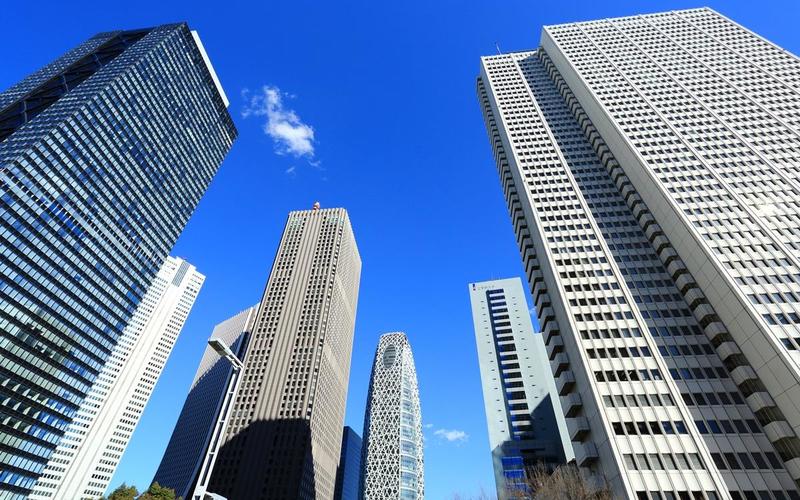
Introducing Shinjuku and Yotsuya area
Tokyo’s city center: Shinjuku. Shinjuku Station is where every railway line stops, with over 3.5 million people passing through each day -- the largest number in Japan. An area with skyrise buildings of both the entertainment district and the financial district intertwining, this place exudes a vibrant city feel day and night.
In addition, the Metropolitan Government Office building, the administration tower of the Tokyo Metropolitan Government, sits on the corner of a group of high-rise buildings. From the building’s 202-meter-high observation deck, you can see as far as the Kanto Plain during the day. Later on, the view invites you into the world of gorgeous nightscapes that are like diamonds in the dark. Also considered as Japan's No. 1 entertainment district is Kabukicho. This place was the center of movies and theaters’ entertainment industry of Japan but as time goes by, the cities are offering a brand new form of entertainment.
Even in this crowded city center, some places are rich with greenery such as Shinjuku Gyoen National Garden and historic shrines provide serenity in the area. The city continues to be the life ground of the people who live in the big city.
While redevelopment is underway, “Omoide Yokocho” and “Golden Gai” still carry the essence of the begone Showa era. These places are now teeming with tourists as they have become popular social gathering places.
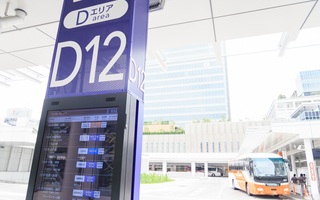
A Shinjuku Expressway Bus Terminal
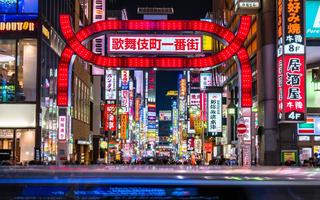
B Shinjuku Kabukicho
13-012-06%E6%96%B0%E5%AE%BF%E6%9D%B1%E5%AE%9D%E3%83%93%E3%83%AB.jpg)
C Shinjuku TOHO Building
D Shinjuku Gyoen National Garden
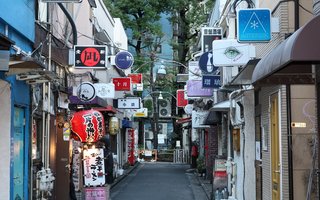
E Shinjuku Golden Gai
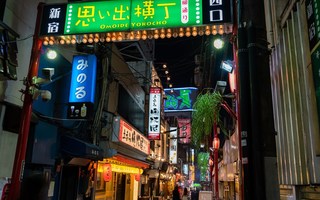
F Shinjuku Omoide Yokocho
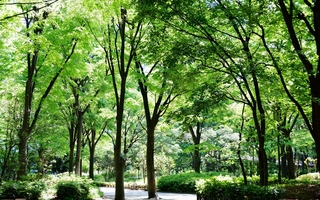
G Shinjuku Central Park
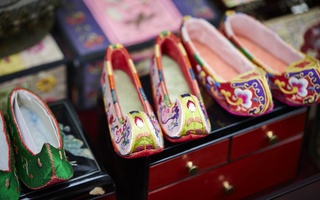
H Shin-Okubo Koreatown
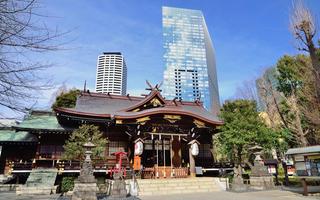
I Shinjuku 12-so Kumano-Jinja Shrine
13-012-14%E6%B6%88%E9%98%B2%E5%8D%9A%E7%89%A9%E9%A4%A8.jpg)
J Fire Museum
K Tokyo Toy Museum
13-012-17%E6%B0%91%E9%9F%B3%E9%9F%B3%E6%A5%BD%E5%8D%9A%E7%89%A9%E9%A4%A8.jpg)
L Min-on Music Museum
A
Shinjuku Expressway Bus Terminal

The Shinjuku Express Bus Terminal, nicknamed “Busta Shinjuku,” began operations in April 2016 as part of the Shinjuku Station South Exit area infrastructure maintenance project. The expressway network has been improved, and the popularity of high-speed buses has risen as it is a much cheaper way to travel than flying or using Shinkansen.
But with the scattered and complicated departure and arrival stations around Shinjuku Station, the area was complicated to navigate.
The Busta Shinjuku was developed to solve such issues. The Busta Shinjuku connects to 300 cities in 39 different prefectures, and there are more than 1,500 daily arrivals and departures.
Long-distance night rides are particularly popular with travelers who want to make good use of time and money, as they leave at midnight and arrive at their destination next morning.
High-speed buses are now pursuing in-vehicle comfort, and the equipment and functionality has been improved on features like the deluxe seats. These seats will remind you of the business class on airplanes.
For your next trip, why don't you try travelling on a high-speed bus? It's a comfortable ride for everyone to enjoy.
B
Shinjuku Kabukicho

It is obvious why Shinjuku Kabukicho is the largest entertainment district in Japan. The story goes back to the era when the war ended and how the area took its name from the traditional performing art of “Kabuki.”
As the redevelopment plan of Shinjuku started at a time when the area was still a burnt field, efforts were made to attract the Kabuki organization to locate a theater here. The town planned to design this city by incorporating entertainment related facilities. It was then named Kabukicho, but the plans were withdrawn due to building restrictions during the economic turmoil.
In 1956, Tokyu Bunka Kaikan, which housed the largest cinema in Japan at the time, and Shinjuku Koma Theater were completed. Decades later, the economic bubble bursted, causing Tokyo’s leisure lifestyle and the cityscape to change in many ways. Even so, the streets of Kabukicho are filled with nearly 3,000 restaurants and amusement facilities for an endless night of fun.
Security issues are known to be common in any entertainment district, but Kabukicho continues to maintain its reputation for safety, which is protected by the efforts of both public and private initiatives.
Streets seem to come alive more at night rather than during the day, so don’t miss out on the breathtaking, sparkling neon lights. You can spot them from the opposite side of Yasukuni Street.
C
Shinjuku TOHO Building
13-012-06%E6%96%B0%E5%AE%BF%E6%9D%B1%E5%AE%9D%E3%83%93%E3%83%AB.jpg)
The Shinjuku Toho Building was built in the spring of 2015 on the former site of the Shinjuku Koma Theater, which was once a famous landmark of Kabukicho.
It is a 130 meters tall and 31 stories high complex, housing the Toho Cinemas Shinjuku, Shinjuku Hotel, Hotel Gracery, shops, restaurants and other amusement facilities. The "Godzilla Head" installed on the outdoor terrace of the 8th floor is life size and towers over the pedestrians below. This display now has become a symbol of Kabukicho.
The Godzilla Head even roars at certain times and is said to be quite impressive. TOHO Cinemas Shinjuku has the 4D theater “MX4D®” that lets you experience the latest technology in movie watching. Not only do the seats move according to the scene, you can also experience the wind and smells; it might even feel like something is touching your neck. This realistic experience will place you deeper into the story. Perhaps the world of the cinema today has shifted to engaging all five senses, rather than just one.
D
Shinjuku Gyoen National Garden
Shinjuku Gyoen National Garden is a peaceful greenery park in the heart of the busiest area of Shinjuku. When the park was completed as an imperial garden in 1906, it was then called Shinjuku Gyoen. After the war, it was opened to the public as a national park and remains as a place of relaxation for Tokyo residents and tourists. The premises of the park is 58.3 hectares, equivalent to 12 Tokyo Domes. The park houses three cleverly arranged garden styles.
This circuit-style Japanese garden allows you to enjoy different views while walking around the pond; the trees and the buildings behind it harmoniously blend urban and nature together. A landscaped garden with a large lawn and green spaces creates a healing environment reminiscent of a park outside London City. In addition, the garden has many rows of Platanus trees and rich, colorful imported plants; being in this garden will transport you to a beautiful day in Europe. About 10,000 trees are planted in the garden, enhancing it’s serenity.
In addition to being listed as one of Tokyo's leading cherry blossom sites, in April each year, a meeting to see the cherry blossoms organized by the prime minister is held here. It also serves as a favorite celebrity hangout.
※ ATTENTION ※ Cherry blossoms lightup at night : In 2019, this event was held for about 10 days from mid-April.
E
Shinjuku Golden Gai

Shinjuku Golden Gai is an area located at the corner of Shinjuku Kabukicho where a total of 280 bars and taverns are spreaded across a tiny block of 50 square meters. People who were involved in black market trade following the war built wooden tenements and lived at this area. The buildings of Golden Gai still retain an old-school vibe, but since being swayed by redevelopment, the look is fading as time passes.
Most of the shops here are very small; the average shop size is between 13 to 15 square meters. As a result, customers are often elbow to elbow, creating a friendly atmosphere with low social barriers.
The Golden Gai is also renowned as a place where eclectic patrons gather; writers, editors, publishers, film directors and actors are known to pop by. You sometimes see a group of customers in a heated debate. Recently, this place has become a spot where foreign travelers can exchange valuable information.
Enjoy a nostalgic night out in unpretentious, yet culturally significant Golden Gai.
F
Shinjuku Omoide Yokocho

In a narrow alley near the west exit of Shinjuku Station, you will find many shops with either red-lit lanterns or neon lights to attract customers along the railroad tracks. This alley, with its rows of shops and their nostalgic warmth, is called Omoide Yokocho.
Built on what was once a burnt field in post-war Tokyo, the shops of many street vendors and black market dealers here were only separated by a single wood board for a wall. Most items sold were daily goods as well as black market contraband. As time went by, many stores were evicted during the land readjustment and development movement, and it eventually became the place you see today. If you want to open a store in this area, however, having just a single wood board separating you from neighboring stores still remains the norm here, just like old times.
During the post-war period of economic control, the alley became renowned for shops serving the internal giblets of cows and pigs because they were relatively easy to obtain.
That is why there are still many “motsu” or giblet and Yakitori shops mixed with taverns and small restaurants in this alley.
Today, there are over 80 shops, including restaurants, ticket shops and general goods stores, and the area is now popular among women and foreign tourists.
G
Shinjuku Central Park

On the west side of Shinjuku Station, there used to be a large-scale water purification facility called Yodobashi Purification Plant in the area where high-rise buildings are.
During the 1950s in the Showa era, plans to develop this area as a sub-center of Tokyo were finalized and the water purification facility was relocated to Higashi-Murayama City. That’s when the high-rise buildings were erected in its place.
Shinjuku Central Park, which is 8.8 hectares in diameter and a little smaller than the size of two Tokyo Domes, was completed in 1968 while the other buildings were under construction. Zelkova trees and cherry trees are planted alongside the beautiful paved lawns in this park. It is indeed a valuable greenery space nestled among its towering neighbors.
In addition to a variety of playground equipment, a small children's play area will be available during the summer months. One such area is the “Jabu-jabu Pond,” where you can enjoy playing with water. Perhaps the water space including the "Niagara Falls", a full of healing and refreshing energy is an hommage to the former water purification plant?
You can enjoy various sports and activities like basketball and running. The park boasts several multi-purpose exercise spaces where you can work up a sweat; it even has a futsal facility for indoor soccer. It is a busy park with events and flea markets held all year round.
H
Shin-Okubo Koreatown

Annyeonghaseyo! Shin-Okubo Koreatown is a large downtown area close to Kabukicho. It is the second largest Koreatown in Japan after Tsuruhashi in Osaka.
Here, it makes feel like you have actually travelled to Korea. From Shin-Okubo Station on Okubo-Dori street, you can hear K-Pop music blasting and see Korean-language signboards, cheese tteokbokki stands, and posters of Korean pop stars. Restaurants, cafes, and many shops are squeezed onto this street. Products range from cosmetics to accessories and small shops where you can purchase traditional Korean foods, sesame oil and Korean paste.
Stars and idols from Korean dramas making an appearance here is quite common, and the availability of fan merchandise such as CDs are the reason this place is gaining popularity. Recently, Middle Eastern, Nepalese, and even Vietnamese restaurants and grocers have started to pop up. At the corner of Shin-Okubo, there is also an Islamic street lined with shops that have halal food.
The spicy aroma lingering in the vibrant alleys makes you think that Asia is united as one rather than existing as separate countries.
We truly hope that this multi-cultural city of Shin-Okubo will become another face of the international city of Tokyo.
I
Shinjuku 12-so Kumano-Jinja Shrine

Among the high-rise buildings that symbolize the Fukutoshin area rests the quiet Shinjuku 12-so Kumano-Jinja Shrine. Around the year 1400 of the Muromachi period, Kurou Suzuki -- a family member who acted as a priest of Kumano Miyama -- is said to have built the shrine in order to worship the Jyunisho-gongen, who was the god of his own birth place.
The entrance is at the end of Shinjuku Central Park and the Otorii Gate welcomes you. The main shrine is on the way to the Otorii Gate, and it feels calm and peaceful, even in the middle of the bustling city.
Behind the main shrine is a skyscraper, which may strike you as odd, but this kind of contrast can only be seen in large cities like Tokyo, where history, tradition and modernity are mixed.
The shrine gets the busiest during the annual festivals held every September. As a guardian of one of Japan's most popular shopping districts, Shinjuku, the sight of a mikoshi shingo or a portable shrine being carried by the shrine’s followers through the streets feels like a poem in the summer heat.
With Kumano Sanzan on top, there are about 3,000 Kumano Shrines across the country, just like the one in Shinjuku.
The involvement of the Kishu people in the shrine’s history is also well known. Here is an interesting fact: in the Kishu area of Hainan city in Wakayama prefecture, there are many people with the family name "Suzuki." Because there are so many Suzukis, it is actually the most common surname in Japan and it has its roots in the Kumano Shrine.
J
Fire Museum
13-012-14%E6%B6%88%E9%98%B2%E5%8D%9A%E7%89%A9%E9%A4%A8.jpg)
As the saying goes, "fires and fights are flowers of Edo,” and the old capital of Edo was a city with a fire problem.
Back in the day, samurais and townspeople were all given roles, and a firefighting organization called “Machibikeshi” was formed. In those days, they used a fire extinguishing method that involved destroying the house next to the one on fire in order to prevent the fire from spreading. A “matoimochi,” meaning flag bearer, played an active role on the frontline to stop fires by climbing on the roof with a “matoi” flag and stopping the fire from the roof.
At the Fire Museum, a facility of the Tokyo Fire Department that opened in 1992, you can see how Japanese firefighting methods changed to modern firefighting.
As soon as you enter, you will be greeted by a fire brigade helicopter that was active until the early 1980's. There are also displays of fire trucks sorted by generation that is truly eye catching. Starting out with an imported car from the Taisho era, this vehicle has also been active in the Showa and Heisei era, being in service for 3 generations. It is clear to see that vehicles will evolve along with the diversification of fire sites due to urbanization.
Not only fire extinguishing, but also rescuing due to natural disasters is also required for firefighters, with the latest equipment used on actual fire sites on display. At the same time, the Fire Museum also exhibits images of real life disasters and is raising awareness on disaster prevention everyday.
K
Tokyo Toy Museum
The Tokyo Toy Museum was founded in Nakano in 1984 and was later moved to the site of the former Shinjuku Ward Yotsuya Fourth Elementary School in 2008. It is an art museum that parents and children can enjoy alike; it is known as a multi-generational spot where anyone between the ages of 0 and 100 years old can get together.
Toys to be displayed in the museum are based on the idea of "artworks that children will see for the first time." You can not only look, but also touch them as well and there are nine different exhibition rooms with different themes to explore.
The very first place in the exhibition, “Good Toy Exhibition Room”, is right at the entrance. Toys that aid in a child’s growth and may be left for future generations are selected every year from toys of various materials from home and abroad. There are about 120 toys on display in this room.
There is "Baby Mokuiku Courtyard " on the first floor and "Omocha no mori” on the second floor where you can fully experience the smell and feel of trees. These rooms were designed around the concept of "Mokuiku," meaning “living with trees.”
At the heart of “Omocha no mori” is a centerhouse made to resemble a birdcage. You can dip inside the “Acorn Pond” and “The Sandplace of Trees” made of cypress and broadleaf trees, taking in the aroma and texture.
It is a place where you can communicate with toys while using your imagination through the experiences of "sight," "touch," "make," and "learn."
L
Min-on Music Museum
13-012-17%E6%B0%91%E9%9F%B3%E9%9F%B3%E6%A5%BD%E5%8D%9A%E7%89%A9%E9%A4%A8.jpg)
Min-on (Min-on concert foundation) was founded in 1963 and opened the music museum on the 10th anniversary of its founding. It also changed its historic archive into a museum in 2004. The collection has a total of 300,000 items including classical pianos and folk instruments collected from all over the world, automatic musical instruments such as phonographs and music boxes, and music softwares such as records and CDs. Music scores and related books are also on display.
The purpose is not to look at the exhibits, but to hear the actual sounds of that time. For example, you get to hear a tuned 16th century cembalo. The public can be immersed in the majestic music of that time that they wouldn’t able to experience today.
A disc musicbox with a 40 to 50-centimeter diameter metal plate rotating and irregularly carved projections playing a beautiful tone is housed in a display case. It is about the height of an adult and looks just like a piece of high-end furniture.
In addition, folk instruments that play music from around the world remind us that music is in an intrinsic part of everyday life, regardless of age or which part of the world you live in.